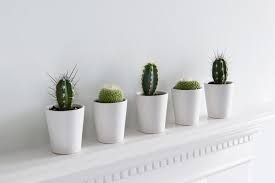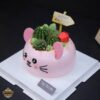Chinese Calligraphy and Lucky Phrases: Bringing Harmony and Prosperity into Your Life

Chinese calligraphy, one of the oldest and most revered artistic traditions in the world, is much more than just a form of writing. It embodies a rich history, cultural significance, and a deep connection with philosophy and symbolism. For centuries, Chinese calligraphy has been used to convey wisdom, beauty, and fortune, with many individuals turning to specific characters and phrases believed to bring good luck and prosperity. These phrases, often displayed in homes, businesses, or public spaces, have the power to influence one’s fortune, attract positive energy, and create a sense of balance and harmony in one’s life.
In this article, we will explore the significance of Chinese calligraphy, its role in conveying lucky phrases, and how incorporating these symbols into everyday life can foster prosperity, good health, and happiness.
1. The Art of Chinese Calligraphy
Chinese calligraphy, known as “shūfǎ” (书法) in Mandarin, is a traditional visual art that involves writing Chinese characters with a brush and ink. The practice dates back thousands of years, with early forms of calligraphy dating as far back as the Shang Dynasty (1600-1046 BCE). Over the centuries, it evolved from simple inscriptions to a refined and expressive art form that emphasizes not only the characters but also the fluidity, rhythm, and beauty of brushstrokes.
Unlike Western writing systems, which prioritize legibility, Chinese calligraphy places equal importance on the aesthetic beauty of each character. The strokes are flowing, often rhythmic, and are guided by principles such as balance, proportion, and the connection between the brush and ink. In this way, calligraphy is not merely a functional tool for communication; it is an art form that reflects the personality, spirit, and intentions of the calligrapher.
Chinese calligraphy is often infused with deep philosophical meanings drawn from Confucianism, Taoism, and Buddhism. Each character is a symbol of a particular value or concept, and when arranged into meaningful phrases, these characters can convey profound ideas or intentions.
2. The Significance of Lucky Phrases in Chinese Culture
In Chinese culture, words have significant power. The belief that words and characters can influence one’s destiny is deeply rooted in traditional Chinese philosophy. Certain words and phrases are considered to be especially auspicious or lucky, believed to attract good fortune, wealth, and happiness.
Lucky phrases are typically displayed in calligraphy on scrolls, banners, or paintings and are often found in homes, businesses, and temples. These phrases carry positive connotations, invoking blessings and protection for those who encounter them. Many of these phrases are also linked to traditional Chinese festivals, such as the Chinese New Year, when the placement of specific calligraphic messages is meant to ensure a prosperous year ahead.
These lucky phrases are derived from ancient Chinese sayings, proverbs, or expressions. They are carefully chosen for their meaning and phonetic sound, as certain syllables in Chinese are believed to have auspicious connotations. For example, the word “福” (fú), meaning “fortune” or “good luck,” is one of the most popular characters used in lucky phrases and is often displayed upside down to symbolize the arrival of fortune, as the pronunciation of “倒” (dào), meaning “upside down,” sounds similar to the word “到” (dào), meaning “arrives.”
3. Common Lucky Phrases in Chinese Calligraphy
Many lucky phrases in Chinese calligraphy carry messages of good fortune, wealth, happiness, and peace. These phrases are often used to decorate spaces, particularly during important holidays and events. Below are some of the most commonly used lucky phrases and their meanings:
a. “福如东海,寿比南山” (fú rú dōng hǎi, shòu bǐ nán shān)
This phrase is one of the most well-known expressions of good luck and longevity in Chinese culture. The characters mean “May your fortune be as vast as the East Sea, and your life as long as the Southern Mountains.” The phrase conveys wishes for a long, prosperous life and abundant good fortune.
b. “招财进宝” (zhāo cái jìn bǎo)
This phrase, meaning “Bring in wealth and treasure,” is commonly displayed in businesses and homes to attract financial prosperity. The characters “招财” (zhāo cái) refer to inviting wealth, while “进宝” (jìn bǎo) means bringing treasures or valuables into one’s life. It is a popular phrase during the Chinese New Year, as it symbolizes a prosperous year ahead.
c. “年年有余” (nián nián yǒu yú)
Translated as “May you have abundance every year,” this phrase is commonly displayed during the Chinese New Year. The character “余” (yú) means surplus or abundance, and the phrase is a wish for wealth, prosperity, and a bountiful year. The word “yú” is also a homophone for fish, a symbol of abundance and prosperity in Chinese culture.
d. “事事如意” (shì shì rú yì)
This phrase means “May everything go as you wish.” It is commonly displayed to wish success, harmony, and satisfaction in all aspects of life. Whether in business or personal life, this phrase reflects a desire for smooth, favorable outcomes in all endeavors.
e. “平安健康” (píng ān jiàn kāng)
This simple phrase translates to “Safety and health.” It expresses a wish for physical well-being, peace, and protection from harm. This phrase is especially common in homes and places where the focus is on family and health. It symbolizes a desire for peace and good fortune in one’s life.
f. “财源广进” (cái yuán guǎng jìn)
This phrase means “May wealth flow in from all directions.” It is often seen in business settings and is used to invite financial success and business prosperity. The phrase expresses the hope that wealth will come from many different sources and that one’s efforts will yield abundant returns.
g. “家庭幸福” (jiā tíng xìng fú)
Meaning “Family happiness,” this phrase is used to express well wishes for harmony and joy within the family unit. It is a common expression during Chinese New Year, as it signifies the importance of family and togetherness in Chinese culture.
4. The Role of Calligraphy in Feng Shui
In addition to the aesthetic and symbolic significance, Chinese calligraphy also plays an important role in Feng Shui, the ancient art of spatial arrangement. Feng Shui focuses on creating harmony and balance in the environment to promote well-being, prosperity, and health. The placement of specific lucky phrases and calligraphy artworks in a home or office can enhance the flow of Chi (the life force) and ensure positive energy circulates freely.
For example, placing calligraphy scrolls with phrases like “福” (fú) or “招财进宝” (zhāo cái jìn bǎo) in key areas of the home or business, such as near the entrance, is believed to invite good luck and wealth. In Feng Shui, the positioning of these phrases is crucial—hanging them at the right height and in the correct direction can optimize their impact.
5. Incorporating Chinese Calligraphy and Lucky Phrases in Modern Interiors
As traditional Chinese calligraphy continues to inspire modern design, lucky phrases are often integrated into contemporary homes and businesses. Incorporating Chinese calligraphy into your interior design can bring a sense of peace, prosperity, and good fortune to your environment.
Here are a few ways to use Chinese calligraphy and lucky phrases in modern settings:
- Framed Calligraphy: A framed piece of calligraphy featuring a lucky phrase or symbol can be a striking addition to your living room, office, or entryway. Choose phrases that resonate with your intentions—whether for wealth, health, or happiness.
- Wall Murals: For larger spaces, murals or wall scrolls with meaningful calligraphy can add an artistic touch while imparting positive energy to the room.
- Gift Giving: Calligraphy scrolls or plaques make thoughtful and auspicious gifts for weddings, birthdays, business openings, or the Chinese New Year. A gift of calligraphy is a gesture of good luck, prosperity, and well wishes.
- Tabletop Decorations: Smaller calligraphy pieces, such as those on decorative plates or books, can be displayed on tabletops or mantels as subtle yet powerful symbols of positive energy.
6. Conclusion
Chinese calligraphy and lucky phrases are not just beautiful works of art; they are a powerful way to invite good fortune, prosperity, and harmony into our lives. By incorporating these ancient symbols into our spaces, we can align our environments with positive energy and create a more balanced, fulfilling life. Whether you are seeking financial success, good health, or simply a peaceful, harmonious home, the power of Chinese calligraphy and its lucky phrases can help you achieve your goals and usher in a life of abundance and joy.

